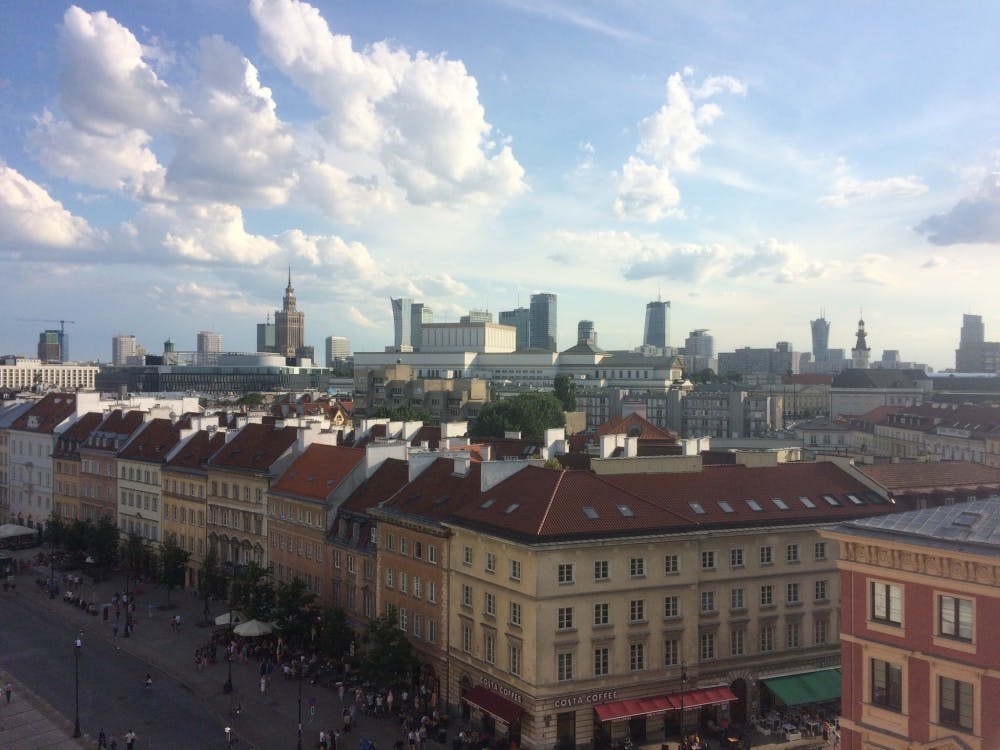The tour bus rode along the 13th-century streets of the city, whizzing past antique trollies and retro cars. The tour guide reminded us of the do’s and don’t's of Warsaw, adding, “but you can pretty much do what you want … freedom and justice.”
Poland is not one of the typical European countries that one might visit over a summer vacation. However, when half of one's family’s heritage stems from the country, it is an important place to visit, and a trip there can quickly turn from a fun vacation into an eye-opening excursion of culture and heritage. As a nation with less than 30 years of democracy, the country is still drunk and giddy with the tastes of freedom and justice.
The new capital of the country, Warsaw, was bombed after World War II because of the Warsaw Uprising that was staged by the occupants of the town. Remnants of many of the bombed buildings grace the outskirts of the city as reminders of the horror that once swept across the land.
Much of the city of Warsaw, whose name stems from an old tale of a farmer falling in love with a mermaid that was traveling through the river close to the city, has been rebuilt. Compared to many of the old buildings that were constructed in the 13th century, the new Warsaw will never have quite the same glory and splendor.
The heart of Frederic Chopin, the renowned composer and musician, is buried at a church in Warsaw, while his body is buried in Paris. Marie Curie’s house, rebuilt after the gruesome bombings, is also in Warsaw. Broken pieces of the wall surrounding the Jewish ghetto in the city are strung between apartment complexes, a dichotomy of the city’s history and of its progressing future.
The old capital of Poland, Kraków, was occupied by Germans during World War II. Most of this city remains intact. The building of the city begun in the eighth and ninth centuries with a royal palace and cathedral. The cathedral houses the remains of a saint and most of the tombs of the old kings of Poland. A dragon statue on the exterior of the castle breathes fire every four minutes, delighting tourists and locals alike.
As for the food, ice cream can be found almost everywhere in Poland. Multiple ice cream vendors reside on every street corner, eager to sell soft serve ice cream and gelato to passersby for a modest price. Belgian waffles — adorned with fruit, whipped cream and occasionally chocolate sauce — are also a Polish favorite.
Caught between a troubled past and a bright future, Poland is an optimistic country, proud of its heritage and its ability to survive difficult situations. A destination not yet arrogant in its freedom, the charming qualities of southern Poland delight all those who visit with their beauty and their newfound "freedom and justice."

